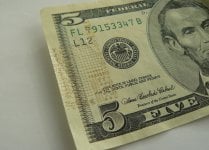- Feb 24, 2011
- 497
THE GIST
[attachment=10]
Banks have long considered placing silicon transistors on currency for security purposes, but the technology was too chunky and intensive for paper bills. Now, tiny low-power organic transistors developed by German scientists could make it possible to really follow the money.
"Up to this day, no country has a bank note that contains active electronic features," said Hagen Klauk, head of the Max Planck Institute of Solid State Research's organic electronics research group. "We've taken the very first baby step, and that is to demonstrate that it is possible in principle to put organic transistors on the surface of a bank note."
Klauk, working with colleagues in Stuttgart and a group of Japanese scientists, started out making organic thin-film transistors that could be fabricated at room temperature without toxic solvents. Manufactured with minute amounts of aluminum and gold using a special dry process, each flexible 250-nanometer-thick array only needs three volts to operate.
Continue reading
- A new nanoscale transistor could be attached to currency for security purposes.
- The transistors have the potential to be part of a tracking or anti-counterfeiting system.
[attachment=10]
Banks have long considered placing silicon transistors on currency for security purposes, but the technology was too chunky and intensive for paper bills. Now, tiny low-power organic transistors developed by German scientists could make it possible to really follow the money.
"Up to this day, no country has a bank note that contains active electronic features," said Hagen Klauk, head of the Max Planck Institute of Solid State Research's organic electronics research group. "We've taken the very first baby step, and that is to demonstrate that it is possible in principle to put organic transistors on the surface of a bank note."
Klauk, working with colleagues in Stuttgart and a group of Japanese scientists, started out making organic thin-film transistors that could be fabricated at room temperature without toxic solvents. Manufactured with minute amounts of aluminum and gold using a special dry process, each flexible 250-nanometer-thick array only needs three volts to operate.
Continue reading

